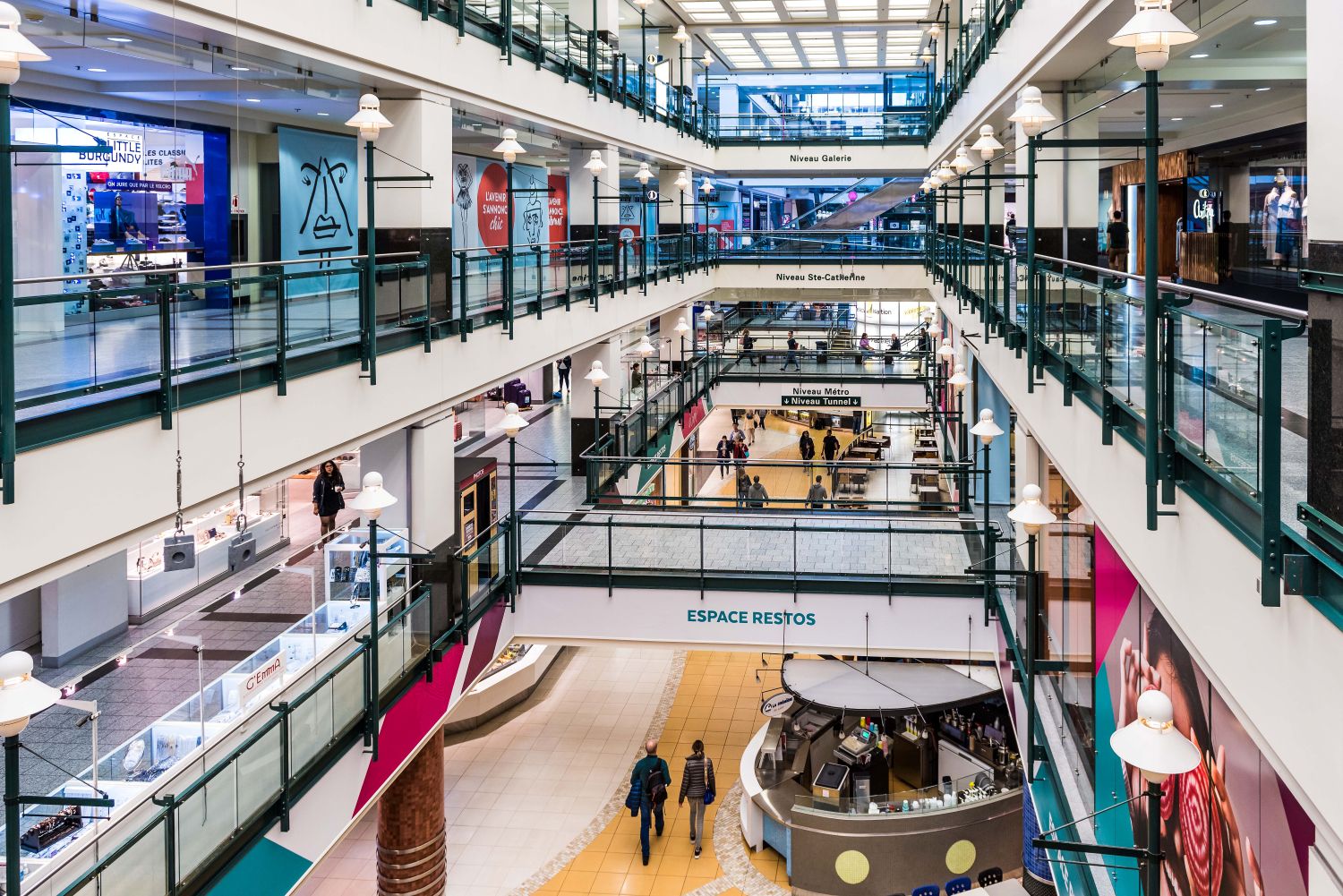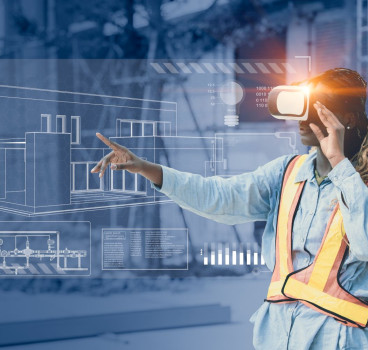Unearthing the future of urban life below ground
When we think of urban development, our gaze instinctively turns upwards. Soaring skyscrapers, sprawling residential complexes and intricate above-ground transportation networks dominate our imagination. Yet, beneath us lies an equally, if not more, critical dimension of our cities - the underground. For centuries, this has quietly served as the hidden workhorse of urban life, accommodating sewers, water pipes and a mass of different utility lines. But a profound shift is underway. The "invisible infrastructure" is no longer just about necessity - it's rapidly becoming the next frontier for innovation, driven by breakthroughs in tunnelling, utility mapping and visionary subterranean city planning. We are on the cusp of unearthing a new era, where the ground beneath our feet holds the key to solving some of our most pressing urban challenges, from alleviating congestion to creating resilient, climate-proof spaces, writes John Ridgeway.
The need to move vital infrastructure and even urban functions underground is no longer a matter of convenience - it's a strategic necessity. Surface property in major global cities is scarce, astronomically expensive and increasingly congested. This finite space faces mounting pressure from population growth as urban centres continue to expand, demanding more housing, more services and even more efficient transportation.
Extreme weather events, rising sea levels and urban heat island effects are also forcing cities to seek more resilient, climate-controlled environments. Existing surface infrastructure, particularly transportation networks and utility grids, are often at breaking point, leading to traffic jams, power outages and service disruptions.
However, placing critical infrastructure underground offers enhanced protection from natural disasters, accidental damage and security threats. Furthermore, moving unsightly utilities or noisy transportation links underground frees up valuable surface land for parks, public spaces and aesthetically pleasing urban design.
In short, the answer to these challenges, increasingly, lies in the deep. But pushing deeper into the earth requires more than just brute force - it demands a sophisticated array of new technologies and intelligent planning.
A new era of tunnelling innovation
For decades, subway systems have represented the pinnacle of underground construction. But the methods and scale of tunnelling are now evolving far beyond traditional drill-and-blast or even conventional tunnel boring machines (TBMs). The new generation of tunnelling technologies is faster, smarter and capable of navigating highly complex geological conditions with unprecedented precision.
Modern TBMs are marvels of engineering, acting as self-contained underground factories. They are equipped with advanced sensors, artificial intelligence (AI) and automated guidance systems that allow them to bore through rock and soil with minimal human intervention. Innovations include - Variable Density TBMs - capable of adapting to different ground conditions (from soft soil to hard rock) by adjusting the density of the slurry used to support the tunnel face. AI-powered systems can analyse geological data in real-time, optimising cutter head pressure and steering, reducing deviations and speeding up progress. Efficient systems for removing excavated material and installing precast tunnel linings immediately behind the cutter head, are further reducing downtime.
For smaller diameter pipes and utility conduits, micro-tunnelling and other trenchless methods are revolutionising urban utility installation. These techniques allow for the installation or replacement of pipes without disturbing the surface, minimising traffic disruption, noise and excavation costs. Guided by lasers and operated remotely, micro-TBMs can achieve incredibly accurate installations over long distances.
While still largely in research phases, radical concepts like plasma torches or high-power lasers are being explored for their potential to vaporise or melt rock, creating tunnels with minimal physical force. Such technologies could enable incredibly fast and adaptable tunnelling, potentially leading to truly revolutionary underground networks.
The subterranean GPS
One of the biggest headaches in underground urban development is the "spaghetti junction" of existing utilities. Historically, records of underground pipes, cables and conduits have been incomplete, inaccurate, or non-existent, leading to costly accidental strikes, delays and safety hazards during excavation. The advent of advanced utility mapping technologies is transforming this challenge into an opportunity for precision and safety.
Ground penetrating radar (GPR) and electromagnetic locators (EMLs) for example, use radar waves or electromagnetic fields to detect and map buried utilities without excavation. Modern GPR systems offer higher resolution and better depth penetration, while EMLs can trace live cables and pipes.
Collected GPR and EML data is no longer just lines on a blueprint. It's integrated into sophisticated 3D GIS platforms, creating highly accurate "digital twins" of the underground infrastructure. These digital models provide a real-time, comprehensive view of everything beneath the surface, allowing engineers to plan new tunnels and excavations with unprecedented confidence.
Imagine as well, a future where new utility installations are embedded with miniature sensors connected to the Internet of Things (IoT). These sensors could constantly transmit data on their location, depth and even operational status, providing a live, accurate map of the underground network for decades to come.
Accurate utility mapping is not just about avoiding strikes - it's about optimising routes for new infrastructure, improving maintenance schedules and enabling truly integrated subterranean city planning. It turns the invisible into the visible, reducing risk and accelerating progress.
Subterranean city planning
With advanced tunnelling and precise mapping, the scope of what can be built underground is expanding dramatically. Visionary urban planners and developers are now looking at the subterranean realm as a blank canvas for innovative urban functions.
Underground data centres are a prime example. These facilities require stable temperatures, security and significant power, making underground locations ideal. The earth provides natural insulation, reducing cooling costs and offering superior physical security against both natural disasters and malicious attacks. Countries like Norway and Switzerland have long utilised underground spaces for critical infrastructure and this trend is expanding globally.
High-speed underground logistics and delivery systems also offer huge potential. We could see automated, high-capacity underground networks whisking goods, waste and even fresh produce beneath our cities, alleviating surface congestion and reducing carbon emissions.
We already know that moving parking facilities underground frees up prime surface real estate for public spaces, pedestrian zones and green areas. These underground hubs can also serve as multimodal transport centres, seamlessly connecting public transit, ride-sharing and bicycle networks.
Instead of individual pipes and cables, we could also see multi-purpose utility tunnels that can house power lines, water pipes, fibre optics and even pneumatic waste disposal systems in a single, accessible conduit. This simplifies maintenance and future upgrades. Furthermore, underground caverns are increasingly being explored for large-scale energy storage solutions, such as pumped-hydro storage or compressed air energy storage (CAES), crucial for integrating intermittent renewable energy sources like wind and solar.
While sunlight is obviously a challenge, innovations in LED lighting and hydroponics are making underground urban farming a viable option, providing fresh produce locally. Even more ambitiously, some proposals envision underground parks and recreational spaces, offering climate-controlled environments for public enjoyment, particularly relevant in cities facing extreme heat or cold.

Then there is the ultimate frontier - subterranean living spaces. This is perhaps the most speculative, but intriguing, application. While large-scale underground residential living faces psychological and practical hurdles (lack of natural light, ventilation), niche applications for specialised environments are being explored. Think climate-controlled research facilities, secure corporate campuses, or even disaster-resilient shelters integrated into city networks. For nations with limited surface area, or facing extreme climate conditions, this idea is gaining traction.
Challenges and the path forward
Despite the immense potential, developing the invisible infrastructure faces significant hurdles. Each underground project is unique, dictated by highly variable soil and rock conditions, which can impact costs, timelines and technical feasibility.
Underground construction is also often more capital-intensive than surface development due to the specialised equipment and engineering required. Overcoming the psychological barrier to underground living and working spaces further requires thoughtful design, ensuring comfort, safety and a sense of connection to the surface.
Ensuring adequate air quality, climate control and emergency egress in deep underground environments is another critical engineering challenge. Controlling groundwater during construction and operation will also be crucial, especially in urban areas with high water tables.
Addressing these challenges will require a multi-disciplinary approach, bringing together geologists, engineers, urban planners, architects and policymakers. It demands greater public-private partnerships, innovative financing models and a long-term vision that transcends electoral cycles.
However, we can see that the future of urban resilience, sustainability and efficiency lies not just above ground, but increasingly, below it. The innovations in tunnelling technology, the precision of modern utility mapping, and the bold visions of subterranean city planning are unlocking a hidden dimension of urban development. From climate-controlled data centres burrowed deep within the earth to high-speed logistics networks silently delivering goods beneath our feet, the invisible infrastructure is poised to redefine how we live, work, and move within our cities.
Additional Blogs

Are architects losing their influence in the digital era?
For decades, architects have been the central creative force in construction, shaping the buildings we see and the way projects are conceived, communicated and delivered. Their role has been...
Read moreWhy the word “Innovation” has lost its meaning in construction
“Innovation” has become one of the most overused terms in construction. It appears in the dozens of press releases we receive each day, conference talks and project reports, often without any real...
Read more

Retrofit fatigue and are we asking too much of old buildings?
As the world pushes toward net-zero emissions, the pressure to decarbonise our built environment is more intense than ever. Governments, developers and building owners are investing heavily in energy...
Read more